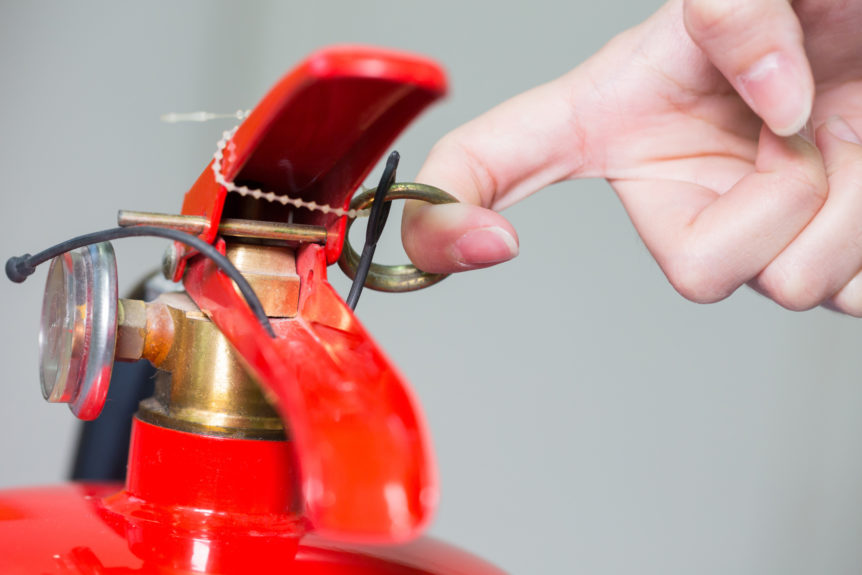A majority of people can use a fire extinguisher with ease. It’s not a complicated tool to figure out, and it saves lives more often than not.
One thing people don’t know about fire extinguishers is how a fire extinguisher inspection works. Conducting a fire extinguisher inspection is critical. No one ever wants to be in a situation in which they need one, only to find out it isn’t working.
How to Do a Fire Extinguisher Inspection
This guide will walk you through a proper fire extinguisher inspection. Being prepared is the first step to fire safety. Remember, before you inspect, make sure you know the pieces and parts of the device. That way, you know what you’re doing.
1. Do a Fire Extinguisher Inspection Regularly
The ideal timeline for inspecting a fire extinguisher is at least every month. There are plenty of different types of maintenance you should do for them, such as servicing and even replacing them.
2. Check the Inspection Tag & Pin
Your fire extinguisher should have a tag on the side of it that keeps track of inspections. If you haven’t kept a record of inspections, now is a good time to start. You always want to stay on top of this. Don’t let it go too long simply because you don’t realize how long it’s been since you last did it.
You’ll also want to make sure the pin is present and firmly in place. If there’s no pin, replace the device.
3. Read the Gauge and Recharge
There is a gauge on your fire extinguisher. You’ll see a yellow needle that should point toward the level of charge the tank has. If it’s in the green, it’s fine and shouldn’t need a charge.
If it’s below the green, you might need to recharge the tank. If you need a fire extinguisher recharge, don’t try to do it yourself. Go to a professional and let them take care of it for you.
Another way to check the level of liquid inside is to pick up the extinguisher. If you don’t feel any liquid inside, you may need to replace or recharge the device.
5. Check the Hose and Directions
It’s critical to make sure the hose on your device is intact. Make sure that there aren’t any cracks in it and that the attachment is secure. Look inside, as well, to check for any clogs.
Look on the side to inspect the directions label. It’s important for the directions to always be easy to read in case of an emergency.
4. Check for Damage to the Tank
For an extinguisher to work right, it needs to have the right amount of pressure inside. If it looks jostled, damaged, or punctured, then that means there’s a change in pressure. If that happens, it either won’t work, or it’ll be dangerous. A possible danger is the risk of explosion.
More Fire Emergency Tools
After you do a fire extinguisher inspection, you should check other emergency features. Fire sprinklers and fire alarms are also critical tools when it comes to fire safety. Never assume they’re working without doing an inspection.
If you’re unsure how to use a fire extinguisher, read this blog post for a step-by-step guide.

